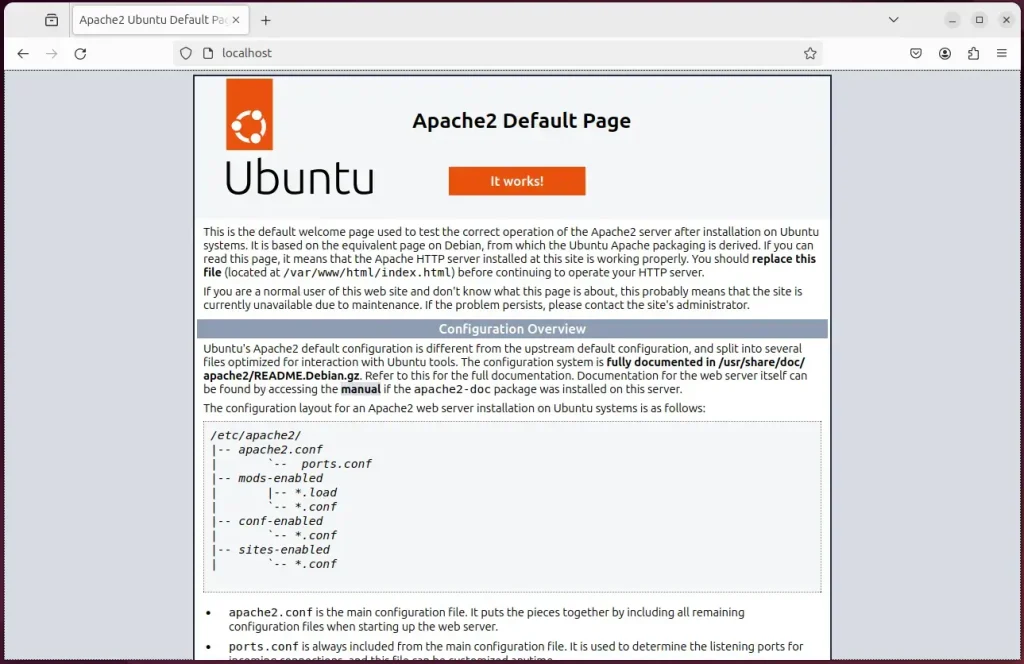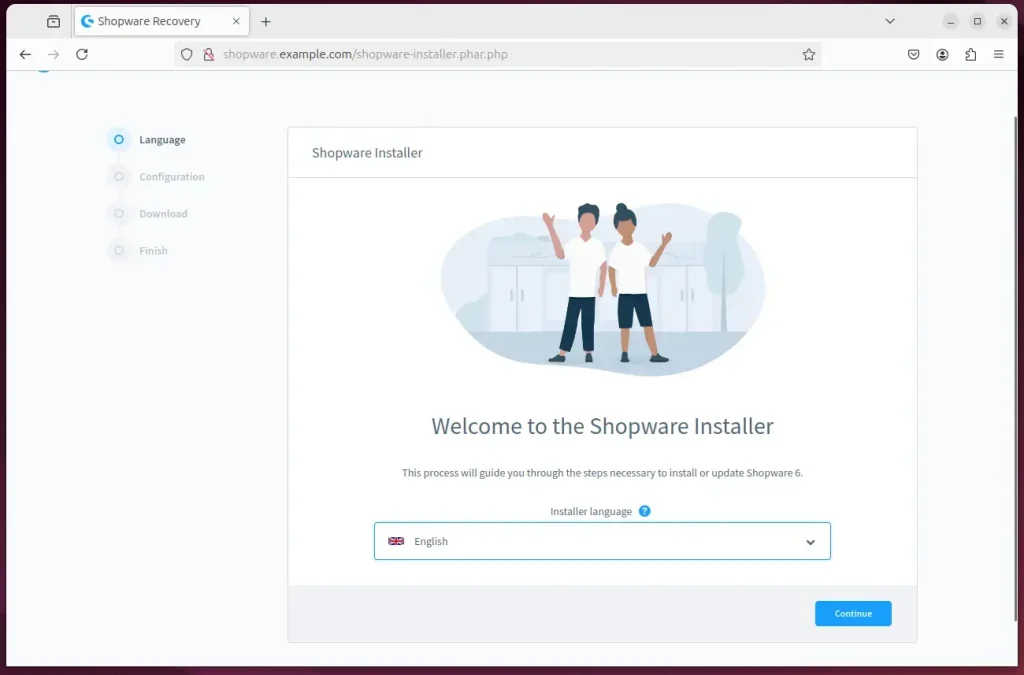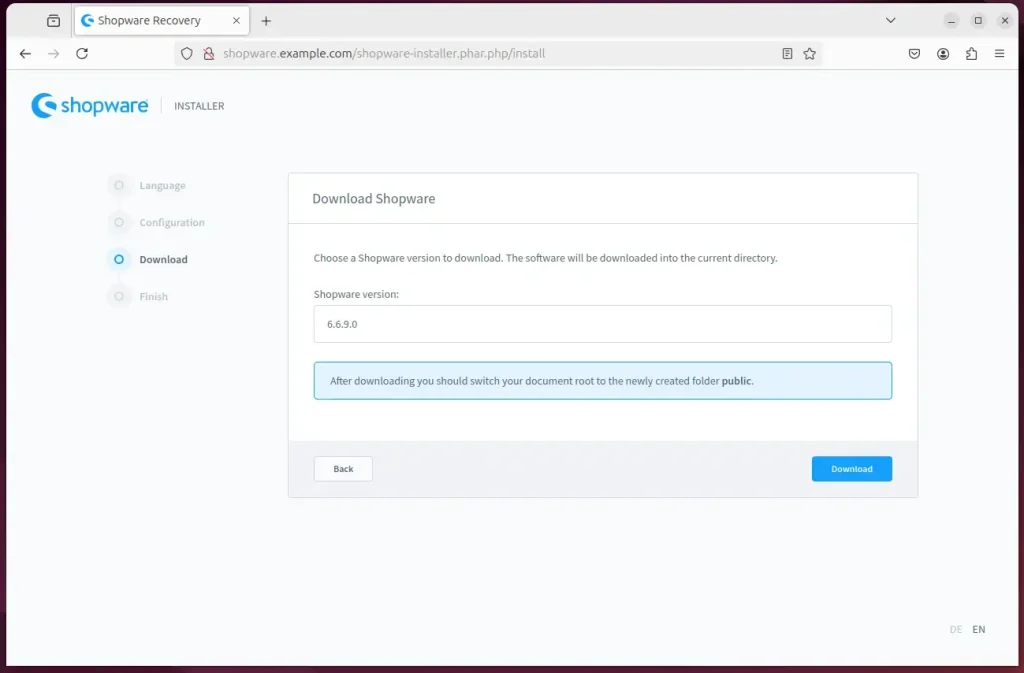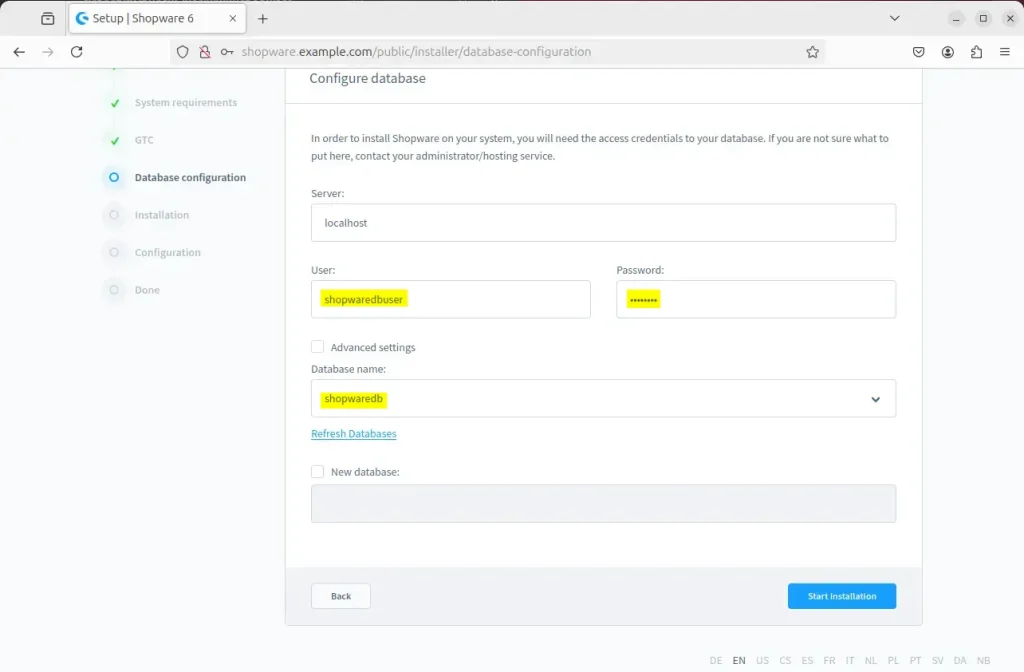This article explains how to install Shopware with Apache on Ubuntu 24.04.
Shopware is an open-source e-commerce platform that allows businesses to create and manage online stores. It’s known for its flexibility and user-friendly interface, making it suitable for small and large companies.
Shopware, Apache, and PHP work seamlessly together, ensuring the application runs smoothly on Ubuntu. This compatibility is a testament to the reliability of the installation.
Installing Shopware with Apache on Ubuntu is a powerful combination that equips you with the tools you need to run a successful online store. It’s a reliable web server that hosts a flexible e-commerce solution, giving you the power to optimize your store’s performance.
Install Apache HTTP server on Ubuntu
Shopware requires a web server. This post will install and use the Apache web server to run Shopware.
To do that, open the Ubuntu terminal and run the commands below to install the Apache web server.
sudo apt update
sudo apt install apache2
Once Apache is installed, the commands below can start, stop, and enable the Apache web server to start automatically when your server boots up.
sudo systemctl stop apache2
sudo systemctl start apache2
sudo systemctl enable apache2
You can test that the Apache web server is running by opening your web browser and browsing to the server’s localhost or IP address.
http://localhost

When you see the Apache2 Default Page, it means the Apache HTTP server is successfully installed.
Additional help on installing Apache on Ubuntu is in the link below.
How to install Apache on Ubuntu
Install the MariaDB database server on Ubuntu
The next component required to run Shopware is a database server. This post will install and use the MariaDB database server.
To install and use the MariaDB database server, use the instructions below.
Open the Ubuntu terminal and run the commands below to install the MariaDB database server.
sudo apt update sudo apt install mariadb-server
Once the MariaDB database server is installed, use the commands below to stop, start, and enable the MariaDB server to start automatically when the server boots.
sudo systemctl stop mariadb sudo systemctl start mariadb sudo systemctl enable mariadb
Run the following commands to validate and test if the MariaDB database server is installed successfully.
sudo mariadb
Once you run the commands above, it will log you onto the MariaDB console and display a message similar to the one below.
Welcome to the MariaDB monitor. Commands end with ; or g. Your MariaDB connection id is 32 Server version: 10.11.2-MariaDB-1 Ubuntu 23.04 Copyright (c) 2000, 2018, Oracle, MariaDB Corporation Ab and others. Type 'help;' or 'h' for help. Type 'c' to clear the current input statement. MariaDB [(none)]>
The message tells you that the server is installed successfully.
Additional help on installing MariaDB.
Create a Shopware database
Upon successfully installing the MariaDB database server, create a blank database on the server specifically for the Shopware application.
As part of the setup, we will create a shopwaredb database and a user account called shopwaredbuser.
Finally, we’ll grant the shopwaredbuser full access to the shopwaredb database.
All the database steps above can be done using the commands below:
But first, log on to the MariaDB database server:
sudo mariadb
Then run the commands below to complete the steps:
CREATE DATABASE shopwaredb CHARACTER SET utf8mb4 COLLATE utf8mb4_general_ci;
CREATE USER shopwaredbuser@localhost IDENTIFIED BY 'type_your_password_here';
GRANT ALL ON shopwaredb.* TO shopwaredbuser@localhost WITH GRANT OPTION;
FLUSH PRIVILEGES;
exit
Ensure to replace ‘type_your_password_here ‘with your password.
Install PHP on Ubuntu Linux
The last component you will need to run Shopware is PHP. The Shopware application is PHP-based and supports the latest versions of PHP.
Then, run the commands below to install the latest PHP version.
sudo apt install php libapache2-mod-php php-intl php-mysql php-curl php-cli php-zip php-xml php-gd php-common php-mbstring php-xmlrpc php-bcmath php-json php-sqlite3 php-soap php-zip
Additional help on installing PHP
How to install PHP on Ubuntu Linux
Download Shopware files
Let’s begin downloading and configuring the Shopware files on Ubuntu Linux.
To always install the latest version, check the download page for Shopware. Get the download link and download the archived package to your computer. Then, extract it.
First, create a Shopware root folder and download the Shopware files.
The final step is to change the permissions. This will allow the Apache web server to interact safely with the files, ensuring a secure environment for your Shopware installation.
sudo mkdir -p /var/www/shopware
cd /var/www/shopware
sudo wget https://github.com/shopware/web-recovery/releases/latest/download/shopware-installer.phar.php
sudo chown -R www-data:www-data /var/www/shopware/
Once you have completed all the above steps, continue configuring the Apache web server below to serve the Shopware content.
Run the commands below to create an Apache virtual host file for Shopware.
sudo nano /etc/apache2/sites-available/shopware.conf
Then, copy and paste the content block below into the Apache server block.
<VirtualHost *:80>
ServerName shopware.example.com
ServerAlias www.shopware.example.com
ServerAdmin [email protected]
DocumentRoot /var/www/shopware
<Directory /var/www/shopware/>
Options FollowSymlinks
AllowOverride All
Require all granted
</Directory>
ErrorLog ${APACHE_LOG_DIR}/error.log
CustomLog ${APACHE_LOG_DIR}/access.log combined
</VirtualHost>
Save the file.
Then, run the commands below to enable the virtual host and restart the Apache server.
sudo a2ensite shopware.conf
sudo a2enmod rewrite
sudo systemctl restart apache2
Setup Let’s Encrypt SSL/TLS for Shopware
You may want to install an SSL/TLS certificate to secure your Shopware site. Secure your Shopware installation with HTTPS from Let’s Encrypt.
Please read the post below for additional resources on installing and creating Let’s Encrypt SSL certificates for Apache.
How to set up Let’s Encrypt SSL certificate for Apache on Ubuntu Linux
Once you have restarted the Apache web server, open your browser and browse to the server hostname or IP address defined in the Apache server block.
http://shopware.example.com/shopware-installer.phar.php
Shopware installation wizard should appear.
Select the installation language and continue.

Select the default PHP library path and continue.

Download the latest version.

After downloading, start the installation and type in the database details created above.

Next, configure your store name and create an admin account.

Shopware should be installed and ready to use.

After the installation, reopen the Apache virtual host file and change the DocumentRoot path from /var/www/shopware to /var/www/shopware/public.
Reload Apache to apply the changes.
sudo nano /etc/apache2/sites-available/shopware.conf
sudo systemctl reload apache2
That should do it!
Conclusion:
- Installing Shopware on Ubuntu with Apache provides a robust platform for managing online stores.
- Integrating Apache, MariaDB, and PHP ensures optimal performance and reliability.
- Following the installation steps ensures that your Shopware application is configured correctly.
- Securing your site with SSL/TLS from Let’s Encrypt adds an essential layer of protection for your e-commerce activities.
- With Shopware successfully installed, you can now leverage its features to enhance your online business experience.
- Regular updates and maintenance will help keep your Shopware installation secure and efficient.

Leave a Reply